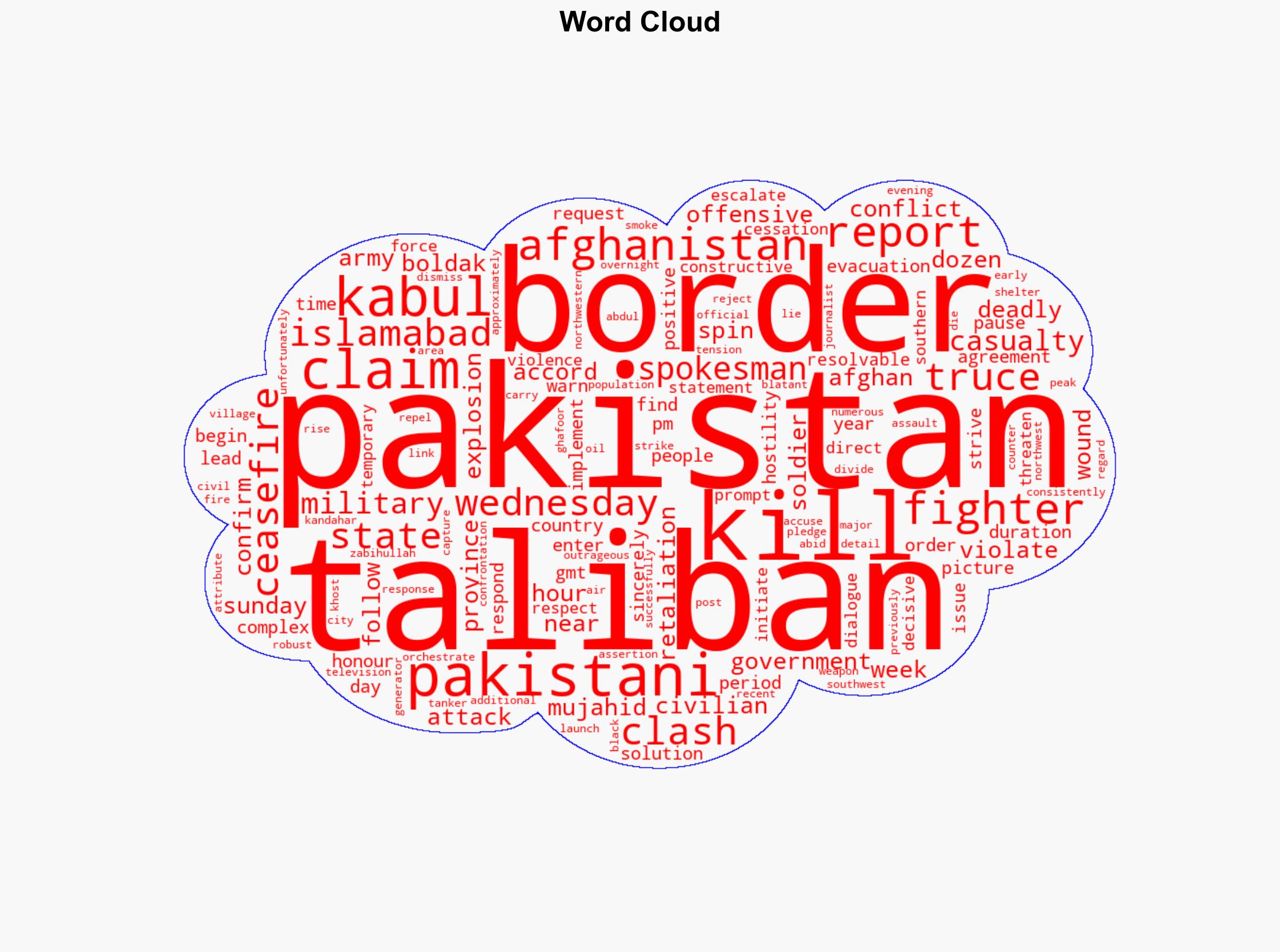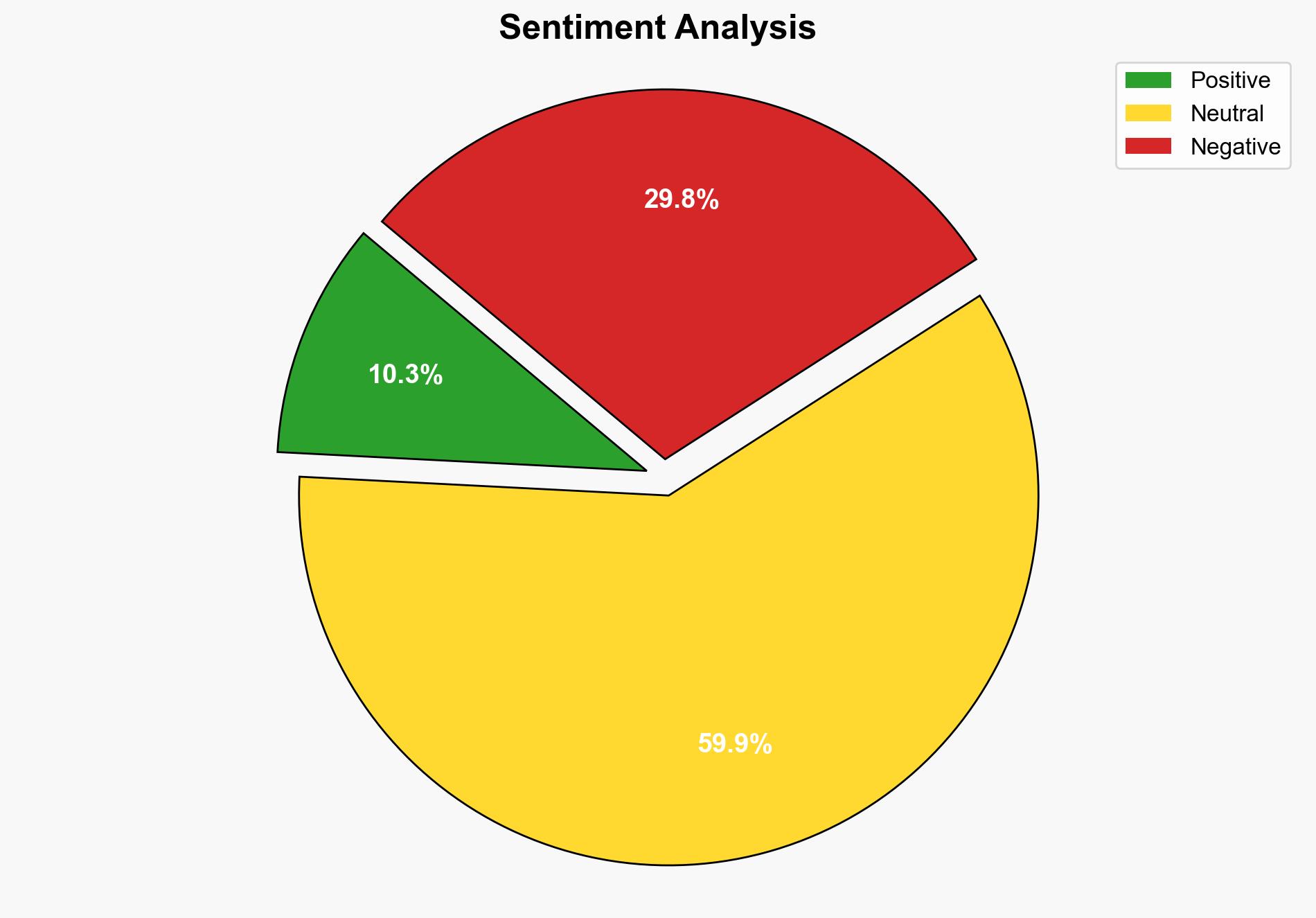Afghanistan Pakistan enter 48-hour truce after deadly border clashes – Al Jazeera English
Published on: 2025-10-16
Intelligence Report: Afghanistan Pakistan enter 48-hour truce after deadly border clashes – Al Jazeera English
1. BLUF (Bottom Line Up Front)
The 48-hour truce between Afghanistan and Pakistan is a temporary measure to de-escalate tensions following recent border clashes. The most supported hypothesis is that both nations are using the ceasefire to strategically regroup and assess their positions. Confidence in this assessment is moderate due to the complex and volatile nature of the situation. Recommended action includes diplomatic engagement to extend the ceasefire and address underlying issues.
2. Competing Hypotheses
1. **Hypothesis A**: The truce is a genuine attempt by both Afghanistan and Pakistan to de-escalate tensions and seek a long-term resolution through dialogue. This is supported by official statements from both sides expressing a desire for constructive dialogue and resolution.
2. **Hypothesis B**: The truce is a tactical pause, allowing both sides to regroup and prepare for potential further military engagements. This is supported by the history of mistrust and recent escalations, including accusations of sheltering militants and retaliatory strikes.
Using ACH 2.0, Hypothesis B is better supported due to the ongoing accusations and military posturing, which suggest a lack of trust and genuine commitment to peace.
3. Key Assumptions and Red Flags
– **Assumptions**: Both hypotheses assume that the statements from Kabul and Islamabad are sincere and that both governments have control over their military forces.
– **Red Flags**: The dismissal of casualty claims by Pakistan and the lack of independent verification of events raise questions about the accuracy of the reported information.
– **Blind Spots**: There is limited information on the internal pressures within each country that might influence their actions, such as domestic political considerations or influence from non-state actors.
4. Implications and Strategic Risks
The continuation of hostilities poses significant risks, including potential for broader regional instability, disruption of trade routes, and humanitarian crises. The involvement of non-state actors like the Taliban could further complicate peace efforts. Cyber and information warfare could exacerbate tensions, with both sides potentially engaging in propaganda to sway public opinion.
5. Recommendations and Outlook
- Encourage third-party mediation to facilitate dialogue and extend the ceasefire beyond 48 hours.
- Monitor for signs of military buildup or rhetoric that suggests preparation for renewed conflict.
- Scenario Projections:
- **Best Case**: Extension of the ceasefire leads to a negotiated settlement and reduction in border tensions.
- **Worst Case**: Breakdown of the truce results in intensified conflict and regional destabilization.
- **Most Likely**: The truce holds temporarily, but underlying issues remain unresolved, leading to periodic skirmishes.
6. Key Individuals and Entities
– Zabihullah Mujahid
– Abdul Ghafoor Abid
7. Thematic Tags
national security threats, cybersecurity, counter-terrorism, regional focus




